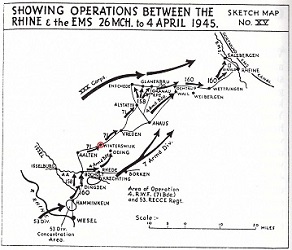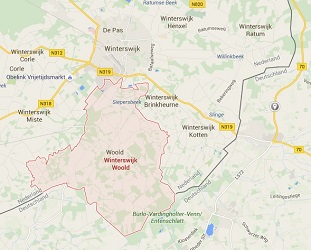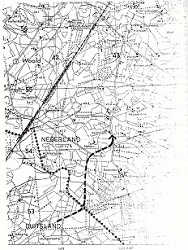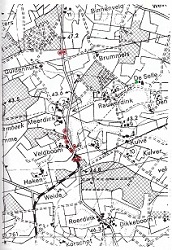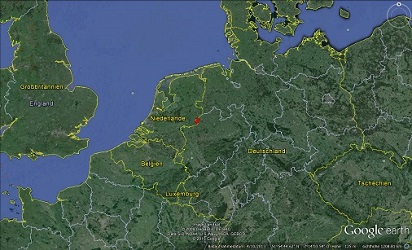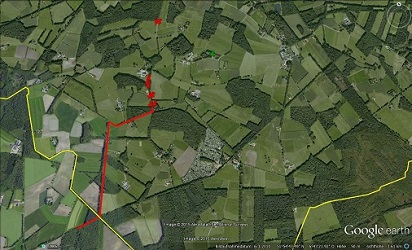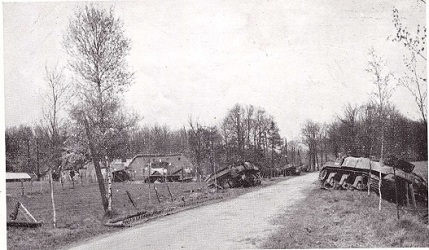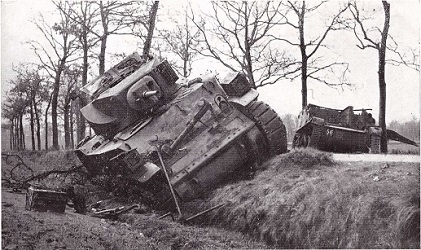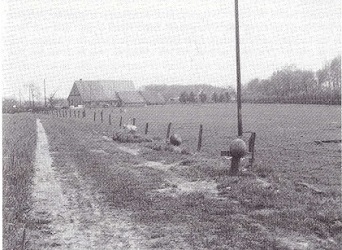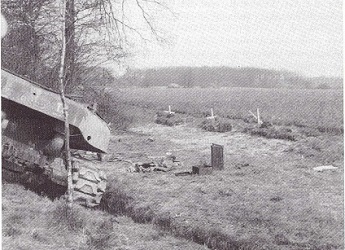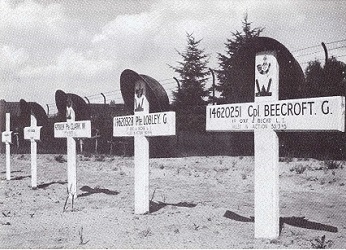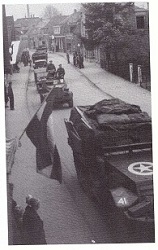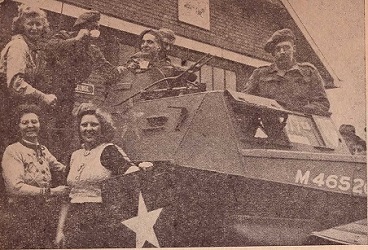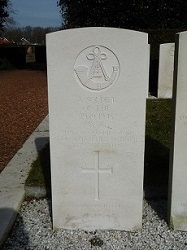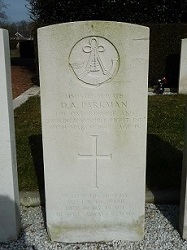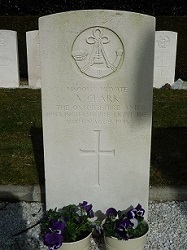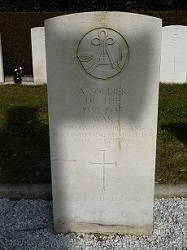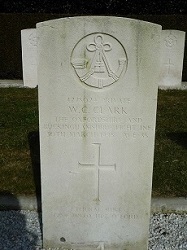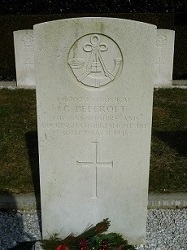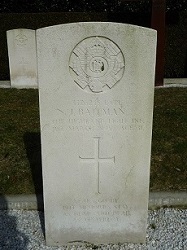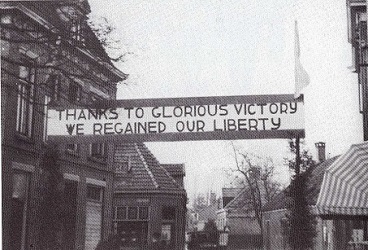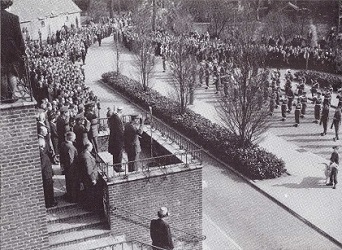I decided that I wanted to do restauration with some linkage to the history of my family. Therefore I thought, it would be nice to know, which unit liberated the hometown of my family - Wintersijk in Holland - and to restore the jeep according to this unit.
Starting from this point I collected information about the liberation of Winterswijk and tried to find out, which unit liberated the town.
The town
Winterswijk is a town in the Netherlands near the german border. The town is situated in the region called "Achterhoek" in the province "Gelderland". The map shows the geographic location.- (Source: Google)
The town currently has roundabout 29000 inhabitants (January 1st, 2014). More detailed information about the town can be found on
Wikipedia.
For Winterswijk the second World War began on Friday, May 10th 1940, the first day of the german invasion of the Netherlands. On this day the town
was occupied by the German Wehrmacht. During the next 5 years Winterswijk was occupied,
and was several times target of bomb raids because of a strategic railway crossing near the town (for a more comprehensive overview over the history of Winterswijk during
the second world war see VHM85).
The liberation
The liberation of Winterswijk was part of 'Operation plunder', the Rhine crossing. "[...] The task given to the 53rd Division was to break out from Bocholt and seize the crossings
of the river Dinkel at Gronau, 30 miles to the North East.
The plan was as follows: 71st Infantry Brigade - with the 3/4th C.L.Y. [note: 3/4th City of London Yeomanry] and C Squadron 53rd Reconnaissance Regiment attached - to lead the advance along the axis Winterswijk-Vreden-Gronau.
A Squadron (to the West) and B Squadron (to the East) 53rd Reconnaissance Regiment were to protect the flanks. [...]" (Barc56, p. 150). The plan is also shown on the map.
This plan is also described in the book of Patrick Delaforce: "The next task was for 71st Brigade to lead towards Gronau thirty miles north-east via Winterswijk
(just in Holland) and Vreden. The Recce patrolled to the west of the main road , reached Bredevoort in Holland some seven miles ahead and 'A' Squadron had two actions
including a nice little ambush. 'C' Sqn on the right of the axis had more problems with map reading than with the foe. The HLI moved up the main road with the
Ox and Bucks on the right near the railway line. Wally Brereton, 81st Field Regt. RA: 'At Bocholt the infantry [HLI] split up combing the town for snipers and rearguard
groups... to the east of Bocholt we parted company with the friendly tanks as they took a different route. The long columns of the Highland Light Infantry filed out
of the town and into the open countryside. Skirmishes continued all morning. Everybody was firing and ducking. The situation was too fluid for the use of artillery
support and we all joined in the shooting. These encounters ended when half the Germans surrendered and the rest ran away to fight another day. If they pinned us down
with the odd MG we would call up an armoured car of the Recce Regt. A young German deserter attached himself to us like a stray dog. We let him ride on the back of
Roger Fox carrier.'" (Dela96, p.186).
Beside the town itself, the community of Winterswijk includes nine hamlets: Meddo, Huppel, Henxel, Ratum, Brinkheurne, Kotten, Woold, Miste and Corle
(Wikipedia).
The british units approached Winterswijk from the south. From there they moved in northern direction towards Winterswijk. This area south of the town is called "Woold".
The following picture shows the position of the Woold-hamlet.
It's very rural and consists of meadows, some barnyards, alleys and some smaller parts of forrest. The left picture below shows an original map of the area.
The dashed arrow marks the way where the units crossed the border, coming from germany. In this area some heavy fighting took place and several
men were killed.
The map in the right picture shows an extract from the map in the left picture.
The thick dashed arrow shows again the way which was taken by the fighting force. Near 'De Selle' a german tank was hidden (green dot). This tank together with S.P. guns and
infantry with Panzerfausts destroyed several british tanks. "The [thin] dashed arrows [near 'De Selle'] show the directions in which the german tank was shooting.
The stars [red circles] mark the locations, of the destroyed [british] tanks." (VHM85, p.206, translation by me).
The same facts are described in the book of Delaware: "A German SP ambushed Desmond Milligan's Ox and Bucks carrier group. The lead tank was brewed up and the eight
Kangaroos following were hit and burned, three still full of troops: 'As we ran to help, flames poured out of the Kangaroos. Men were tumbling out, screaming and burning,
others trying to beat the flames of their burning comrades. It was a terrible sight. Lt Col Howard drove up in his jeep [he was driving] to help in the rescue. He returned
with several of the burned soldiers wrapped up in bandages and looking like Egyptian mummies. Casualties amounted to thirty. The SP had successfully delayed us, had
pulled out and gone.'" (Dela96, p.186).
The following pictures show the same locations as the previous map on a google earth satellite-picture with different degrees of zoom. The yellow line marks the
border between germany and the Netherlands. The red line depicts the way of the troops. The red markers depict the positions of the destroyed british tanks and the
green marker shows the position of the german tank.
The following pictures were made in the area 'Woold' after the combat.
The '56' on the right kangaroo-tank indicates that the vehicle belonged to the second Battalion of the senior infantry brigade. This suites to the 1st Battalion Oxfordshire and Buckinghamshire Light Infantry ('Ox and Bucks'). For further information on the insignia of a british infantry division see also section Division and Battalion details.
"By 9 p.m. [note: on March 30th 1945] the H.L.I. were within about 3 1/2 miles of Winterswijk having met some stiff opposition South of the town. Resistance was from S.P.
guns and Infantry, the former knocking out three vehicles of B Squadron 53rd Reconnaissance Regiment.
By nightfall the Oxford and Bucks, after several sharp brushes with the enemy - during which several 'Kangaroos' were knocked out by S.P. guns - had reached a point near the
railway about level with the H.L.I. The country was close and the latter part of the advance had been carried out 'dismounted'. [...]
At about 11.30 p.m. on the 30th March the 4th R.W.F. were sent forward through the H.L.I. with the object of capturing Winterswijk. All went well until they reached
the Slinger Beek [note: a small beck] a short distance South of the town. Here they found the bridge blown, but C Company and the men of the Carrier Platoon negotiated the stream and occupied
Winterswijk which they found unoccupied. Preparations were then put in hand to construct a new bridge. [...]
At about 2 a.m. 31st March the Oxford and Bucks began moving forward again on the right of the 4th R.W.F., but on approaching the Slinger Beek East of the town they found
the bridge there was also blown and the area heavily mined. The Battalion was then ordered to join the rest of the Brigade on the main axis.
The new bridge on the main road was ready for traffic by 12 noon and the 1st H.L.I., with C Squadron 53rd Reconnaissance Regiment under command, passed over and pressed on
towards Vreden. [...]" (Barc56, p. 150-151)
Again the book of Delaware draws a similar picture: "SP guns also knocked out three Recce cars. By nightfall 1 HLI and the Ox and Bucks were on the outskirts of
Winterswijk, so 4 RWF were sent forward late on the 30th but found the bridge over the Slinger Beek blown. Major Hocquard led the 'C' Coy accross the river and by dawn were
being given a great Dutch welcome with flags and bunting blossoming in the windows. [...] The Sappers repaired the main bridge over the Slinger Beek and the Recce led 1 HLI
towards Vreden [...]" (Dela96, p. 186-187)
The following pictures show the british troops in Winterswijk.
All the sources mentioned so far in this chapter belong to sources that look from the perspective of the involved military troops.
The book by Aalders en Ruwhof provides the view from the Winterswijk inhabitants. The book is called "memories on the liberation of Winterswijk"
and provides a very interesting and personal view on the events in Winterswijk at the end of March 1945.
"Also at 'school O' our liberators were surrounded by the enthousiastic population and tasted some of the male inhabitants the pleasure to have
an english cigarette between their lips. As good and as bad as it was possible, a lot questions were asked many questions to our liberators,
although the talks not always were easy, since only a small number of persons had sufficient command of the English language, while the Englishmen hardly
understood any dutch. At our request, to which army unit our liberators belonged, we got the answer that they were part of the 'Royal Welsh Fuseliers',
of the second British Army." (AaRu45, p.48).
Saturday, March 31st 1945 is the official day of liberation of Winterswijk.
The casualties
In the area 'Woold' altogether 9 british soldiers were killed in combat (NeSt70, p.231):
| Cpl. G. Beecroft, No. 14620251, 1st Oxford & Bucks L.I. | |
| Pte. G. Lobley, No. 14620328, 1st Oxford & Bucks L.I. | |
| Pte. W. Clark, No. 4278024, 1st Oxford & Bucks L.I. | |
| Unknown soldier, assigned to the Boh. Crigre Bucks | |
| Unknown soldier, assigned to the Bat. Oxford Bucks | |
| Sgt. K. Webber, No. 4626288, 49 Tm. Am. Personell-Carrier | |
| Unknown soldier, assigned to the 1st Boh. Crigre Bucks | |
| Pte. D. Parkman, No. 14805612, 1st Oxford & Bucks L.I. | |
| L.Cpl. J. Bateman, No. 3326248 |
The soldiers are burried on the cemetery in Winterswijk. In March 2015 I got the opportunity to make a visit. The following pictures show the headstones.
It's interesting to note, that the quoted data do not completely fit to the data on the headstones. Since the book has been written in 1946, I assume that over time new
insights have been found.
Altogether 49 allied soldiers are burried on the cemetery in Winterswijk. Beside the nine soldiers mentioned above these contain 40 flight crew members, since several
allied planes came down in the area of Winterswijk during the war.
Furthermore 30 german soldiers are burried in Winterswijk.
The first commemorations 1946
1946 the first commemorations of the liberation took place. The following pictures show some impressions.
On the last picture the official ceremony can be seen. The capture of this picture states that "on 30th March 1946 the liberation was
commemorated. The band of the 1st Battalion Royal Welsh Fuseliers plays a serenade. General-Major Ross and mayor Kneppelhout are standing
on the pedestal of the city hall. At the far right of the picture a buck is standing, the mascot of the welsh division." (VHM85, p.262).
Summing up, Winterswijk was liberated by the 53rd (welsh) division. The 4th battalion Royal Welsh Fusiliers was the unit that first entered
Winterswijk on 31st March 1945.
Therefore I decided to restore the jeep like one of this unit. For information on specific restauration details on MB158963 with regard to the unit
see section Division and Battalion details.
70th commemorations 2015
The following video shows a very interesting report about the liberation of Winterswijk with the ride of 'Keep them rolling', tales of the eye witnesses Jan Hendrik Kots and
Henk Krosenbrink, commemoration at the monument of the tank battle in the 'Woold' and speech of mayor Thijs van Beem.
The video is in dutch and has a length
of about 35 minutes.
- (Source: Youtube)
